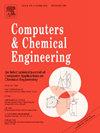基于深度学习和优化算法的CO₂加氢制轻烯烃多尺度建模与优化
IF 3.9
2区 工程技术
Q2 COMPUTER SCIENCE, INTERDISCIPLINARY APPLICATIONS
引用次数: 0
摘要
本研究提出了一种新的多尺度建模和优化框架,该框架集成了深度学习和先进的优化技术,以增强CO₂加氢生产轻质烯烃。针对一维固定床反应器,建立了结合反应动力学(RWGS、FT、FTS)和传热传质动力学的第一性原理模型,生成了超过40万行模拟数据集。在评估的深度学习架构中,递归神经网络(RNN)对2%高斯噪声表现出卓越的预测精度和鲁棒性,确立了其作为机制模型替代品的有效性。采用两种优化策略:(1)利用梯度优化的内点法,通过调节入口温度和压力(608.1 K, 1.6406 MPa),丙烯收率达到37.66%;通过优化催化剂堆积密度(423 kg/m³),丙烯收率达到38.05%,分别比基准(32.33%)提高5.33%和5.72%;(2)采用DDPG、PPO和TD3算法的强化学习(RL),其中TD3在基于rnn的环境中获得了最高的奖励(34.02%),展示了动态条件下的自适应控制。对比分析表明,内点法在静态、高精度优化方面具有优势,而强化学习在动态、不确定环境下具有鲁棒性。这种双重优化方法,通过域随机化和机制模型增强来解决植物模拟不匹配问题,为智能碳捕获和利用(CCU)系统提供了坚实的基础,促进了CO 2转化和选择性烯烃合成。本文章由计算机程序翻译,如有差异,请以英文原文为准。
Multi-scale modeling and optimization of CO₂ hydrogenation to light olefins via deep learning and optimization algorithms
This study presents a novel multi-scale modeling and optimization framework that integrates deep learning and advanced optimization techniques to enhance CO₂ hydrogenation for producing light olefins. A first-principles model, incorporating reaction kinetics (RWGS, FT, FTS) and heat and mass transfer dynamics, was developed for a one-dimensional fixed-bed reactor, generating a dataset of over 400,000 simulation rows. Among the evaluated deep learning architectures, the recurrent neural network (RNN) demonstrated superior predictive accuracy and robustness against 2 % Gaussian noise, establishing its efficacy as a surrogate for mechanistic models. Two optimization strategies were employed: (1) The interior-point method, leveraging gradient-based optimization, achieved propylene yields of 37.66 % by tuning inlet temperature and pressure (608.1 K, 1.6406 MPa) and 38.05 % by optimizing catalyst packing density (423 kg/m³), yielding 5.33 % and 5.72 % improvements over the baseline (32.33 %), respectively; and (2) Reinforcement learning (RL) with algorithms including DDPG, PPO, and TD3, where TD3 achieved the highest reward (34.02 %) in an RNN-based environment, demonstrating adaptive control under dynamic conditions. Comparative analysis reveals that the interior-point method excels in static, high-precision optimization, while RL offers robustness in dynamic, uncertain environments. This dual-optimization approach, augmented by domain randomization and mechanistic model augmentation to address plant-simulation mismatches, provides a robust foundation for intelligent carbon capture and utilization (CCU) systems, advancing CO₂ conversion and selective olefin synthesis.
求助全文
通过发布文献求助,成功后即可免费获取论文全文。
去求助
来源期刊

Computers & Chemical Engineering
工程技术-工程:化工
CiteScore
8.70
自引率
14.00%
发文量
374
审稿时长
70 days
期刊介绍:
Computers & Chemical Engineering is primarily a journal of record for new developments in the application of computing and systems technology to chemical engineering problems.
 求助内容:
求助内容: 应助结果提醒方式:
应助结果提醒方式:


